It all began with a simple idea. Instead of pulling a watch out of our pockets to tell time, wouldn’t it be much more convenient if we could wear them on our wrists? To one of the most renowned companies in the history of watchmaking, the answer was simple. And thus began the creation of the most acclaimed Swiss watch brand– Rolex. The Rolex name is synonymous with luxury. When most people think about luxury watches, Rolex is the first brand that comes to mind. Rolex history proves it to be one of the longest running Swiss watch manufacturers. But what did it take to become such a status symbol for prestigious watches throughout the entire world?
If you’ve ever found yourself wondering what makes the esteemed Swiss watch manufacturer tick, you’ve come to the right place. We’re delving into Rolex history-not just the exceptional watches, but the company itself. Let’s start from the very beginning. Who is the face of Rolex? Who is the mastermind behind it all?
There is one man in particular we all have to thank for the innovation of these trusty timepieces. Hans Wilsdorf was born on March 22nd, 1881 in Germany. Orphaned as a child, Wilsdorf was forced to grow up very quickly. As difficult as this proved to be, it laid the foundation of hard work and determination that Wilsdorf needed to start one of the most renowned luxury timepiece businesses. After finishing boarding school, Wilsdorf secured a position working for a pearl distribution company where he learned of world trade and the jewelry industry. A few years later, Wilsdorf began working for a watch exporter named Cuno Korten. This is where his fascination with pocket watches and timepiece technology began.
In 1905, at the age of 24, Hans Wilsdorf moved to London to open his own business with the help of his partner, Alfred Davis. Their company, Wilsdorf and Davis, specialized in importing Hermann Aegler’s Swiss movements and then placing them in high-quality watch cases. Wilsdorf and Davis distributed these timepieces to jewelers, who then added their own names to the watch dial. The duo left their mark on these watches by stamping “W&D” on the inside of the caseback. At this time, wrist watches were called “wristlets” and were only worn by women. Many men laughed at the idea of ever wearing a wristwatch because they were considered to be so feminine. But Wilsdorf was convinced to prove them all wrong.

As accounted in the book Rolex Jubilee Vade Mecum written by Wilsdorf himself, there were five main goals he “wished to achieve:
To this day, each of these goals continues to be maintained and is at the forefront of all new Rolex creations.
Wilsdorf knew watches and Davis knew financing and international trade. The two made the perfect pair for starting a watch making business. However, Alfred Davis doesn’t seem to get the credit he deserves. While Wilsdorf was the brain of the operation, Davis was the backbone. Without him, Wilsdorf’s dream to make watches might not have been possible. It was Davis’ initial investment in the company that allowed Wilsdorf and Davis to take off. Eventually, Davis met and fell in love with Wilsdorf’s younger sister. After they married, the Wilsdorf and Davis partnership was solidified even further. The company became a family affair with both brothers-in-law sharing equal ownership.
Initially, Wilsdorf and Davis focused only on making and selling two types of watches: pocket watches and travel clocks (also known as portfolio and purse watches). These watches were covered in exotic leather cases. Some of the earlier models were made of silver with porcelain dials. Other than the numerals and the hands, the dials were plain. This allowed the growing company’s retailers to paint their own brand names on them. Every model utilized Aegler’s movements imported from Switzerland since they were preferred for their accuracy and affordable price. The company’s reputation was growing, as was their business. However, Wilsdorf did not want to restrict their growth. They decided to take a significant step forward and began manufacturing wristwatches for both men and women.
The first line of Rolex wristwatches placed on the market was a series of men’s and women’s silver watches with leather straps. The success of these watches was immediate. Soon after, the range was widened to include designs in gold. The idea of expanding watch bracelets came next. Suddenly, Rolex was taking in thousands of orders. Wilsdorf knew he was onto something great.
In 1908 the trademark “Rolex” was registered and an official office was opened in Switzerland. Wilsdorf tried hundreds of names before settling on “Rolex.” He wanted his watches to bear a name that was short and easy to say and remember in any language. It was also important for the company’s name to look good on dials and movements. Notably a vital moment in Rolex history, Wilsdorf claimed he was “riding on the upper deck of a horse-drawn omnibus in the city of London [when] a genie whispered ‘Rolex’ in my ear.”
Two years later marked another crucial moment in Rolex history. The distinguished company had been concentrating on the quality and precision of their watch movements for years. In 1910, the Swiss watch manufacturers’ hard work paid off. Rolex achieved recognition as the first wristwatch to receive the Swiss Certificate of Chronometric Precision. Four years later, a Rolex was the first wristwatch awarded a class “A” precision certificate from Kew Observatory in Great Britain. In 1919, Wilsdorf bought out Davis’ share and relocated Rolex to Geneva, Switzerland, where the company is still headquartered today.
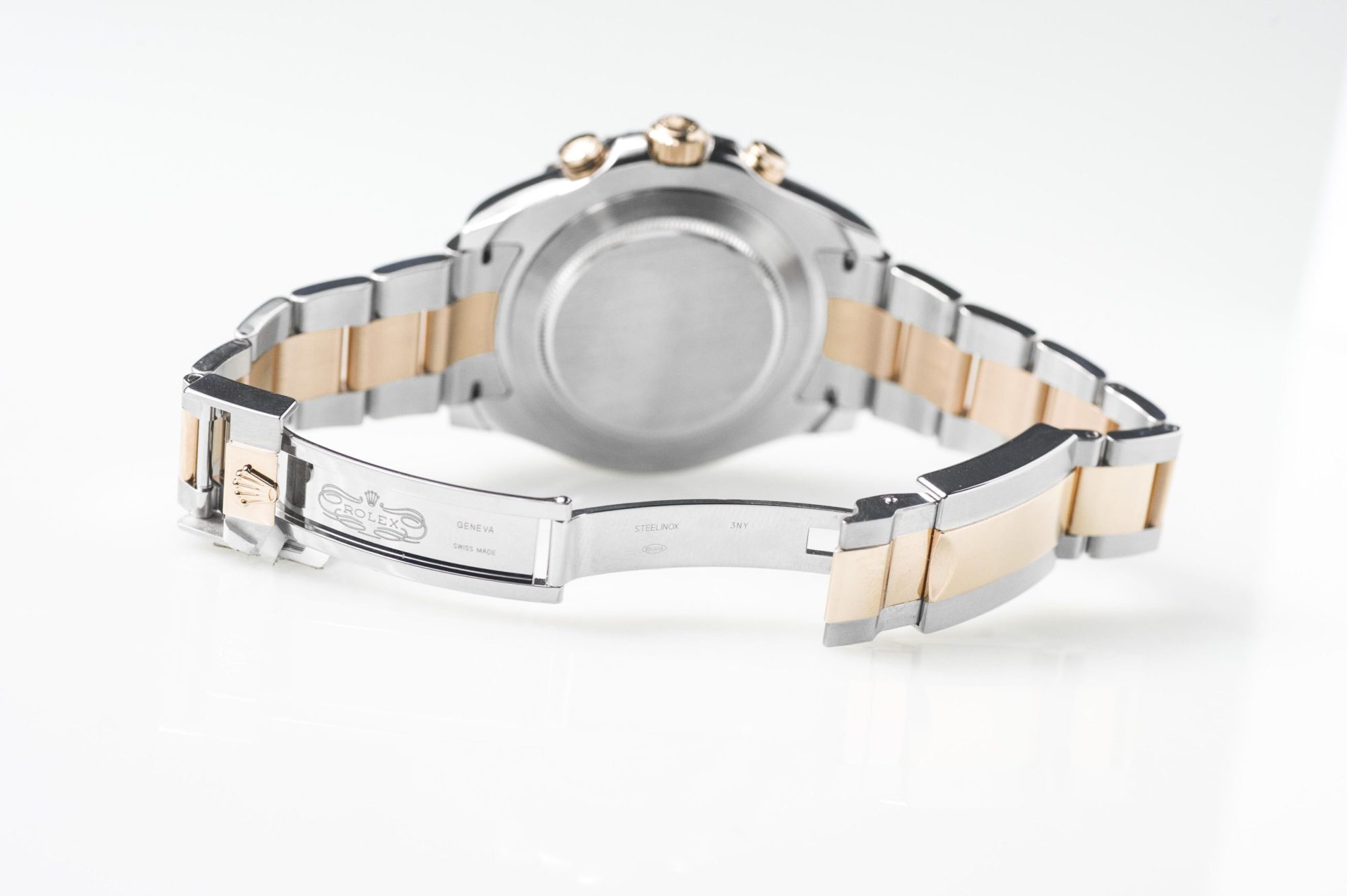
Jean-Frederic Dufour is the current CEO of Rolex. Dufour has a long history working in the watch industry. His background consists of working for numerous watch companies such as Blancpain, Chopard, and Ulysse Nardin. Additionally, Dufour was the CEO of Zenith for 5 years, accredited with being responsible for the company’s resurgence over the past half-decade. Dufour is the sixth Rolex CEO and has held his position since 2014.
It’s no surprise that Rolex has been featured in numerous movies throughout history. Rolex is a symbol of class, excellence, and luxury. What better way to accessorize movie stars?
Because Rolex is the most recognizable and most sought after watch brand throughout the world, the prices can seem prohibitive to some. With a Rolex, you truly get what you pay for, so it may be worth the dent in your wallet. But since everyone loves a good deal, we’ve listed the most popular and affordable Rolex watch models on today’s market. The creation of each of these models marked pivotal moments in Rolex history.
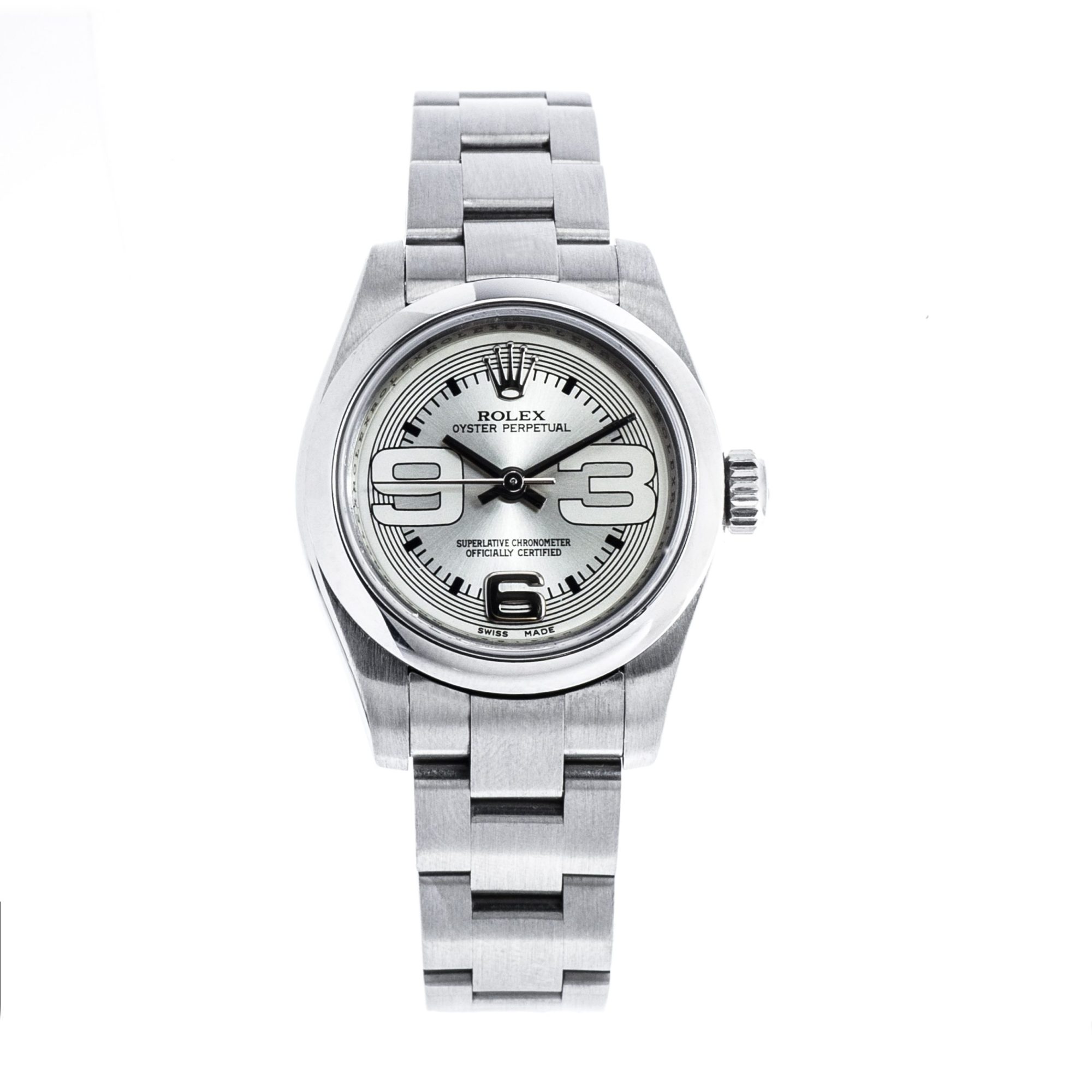
The Rolex Oyster Perpetual is a combination of two of the most important moments in Rolex history. In 1926, the Oyster case was invented. This watch case was the first of its kind- waterproof and dustproof. The airtight case provides optimal protection for the watch movement. But Rolex didn’t want the world to simply believe this- they wanted to prove it. In 1927, a young English swimmer named Mercedes Gleitze swam across the English Channel wearing a Rolex Oyster. The swim lasted over 10 hours and the watch remained in perfect working order for the entire duration. In 1931, Rolex invented the world’s first self-winding mechanism with a Perpetual rotor. Today, perpetual movements are at the core of every modern automatic watch. The above pre-owned woman’s Oyster Perpetual features the airtight Oyster case along with an Oyster bracelet, folding clasp, and perpetual movement.
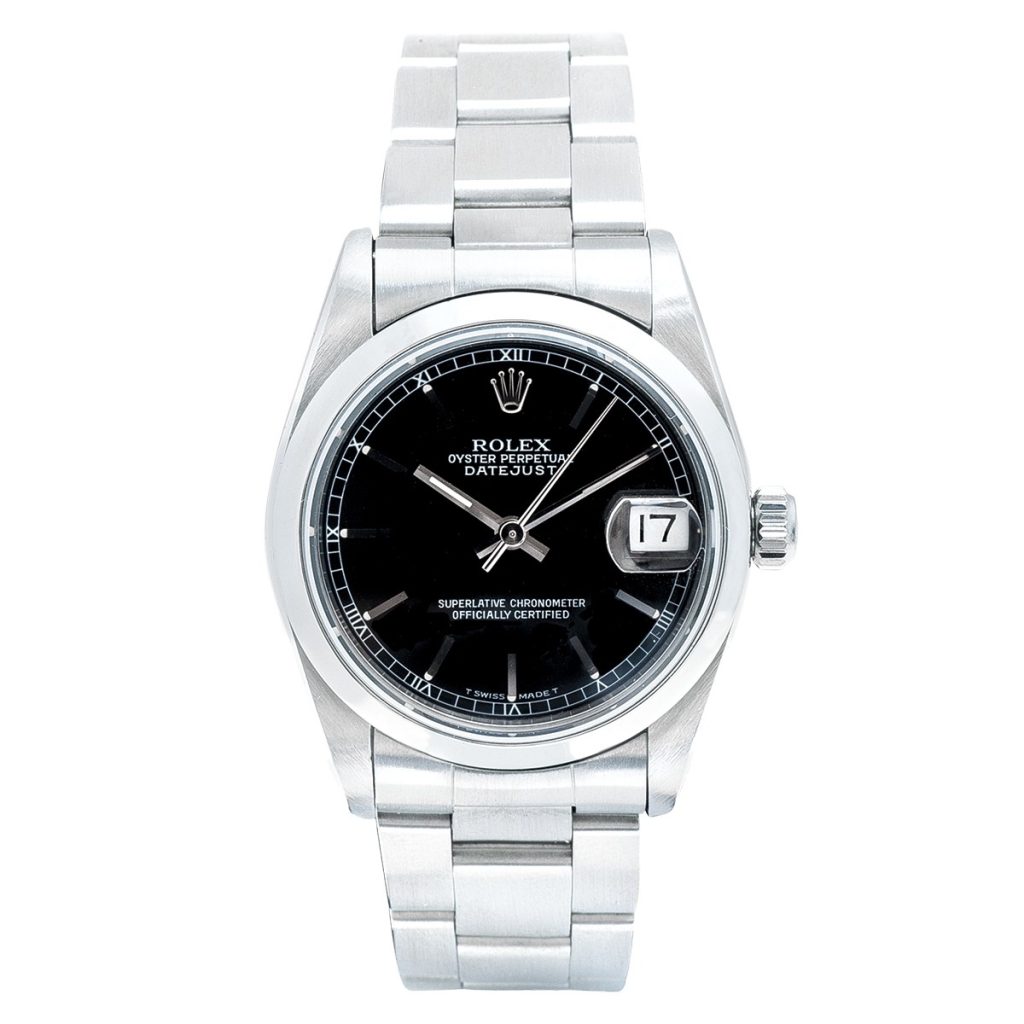
If you desire a classic timepiece, the Rolex Datejust is perfect for you. The Datejust was an instant success after its invention in 1945. This was another historical moment for Rolex as the Datejust was the first self-winding chronometer to display the date in a window on the dial which automatically changed at the stroke of midnight. This also marked the 40th anniversary of the Swiss watch brand. To celebrate, the signature Jubilee bracelet was introduced with the Datejust collection.
Initially, the Datejust was only available in 18k gold for men. Over the years, there have been many updates to this specific collection. Now, the Datejust collection includes men’s and women’s watches in yellow and rose gold, stainless steel, or a combination to make a two-tone style that Rolex dubbed “Rolesor.” The Datejust saw a major update in 1954 with the addition of the Cyclops lens. This new lens allows for further magnification of the date, making it easier to be seen.
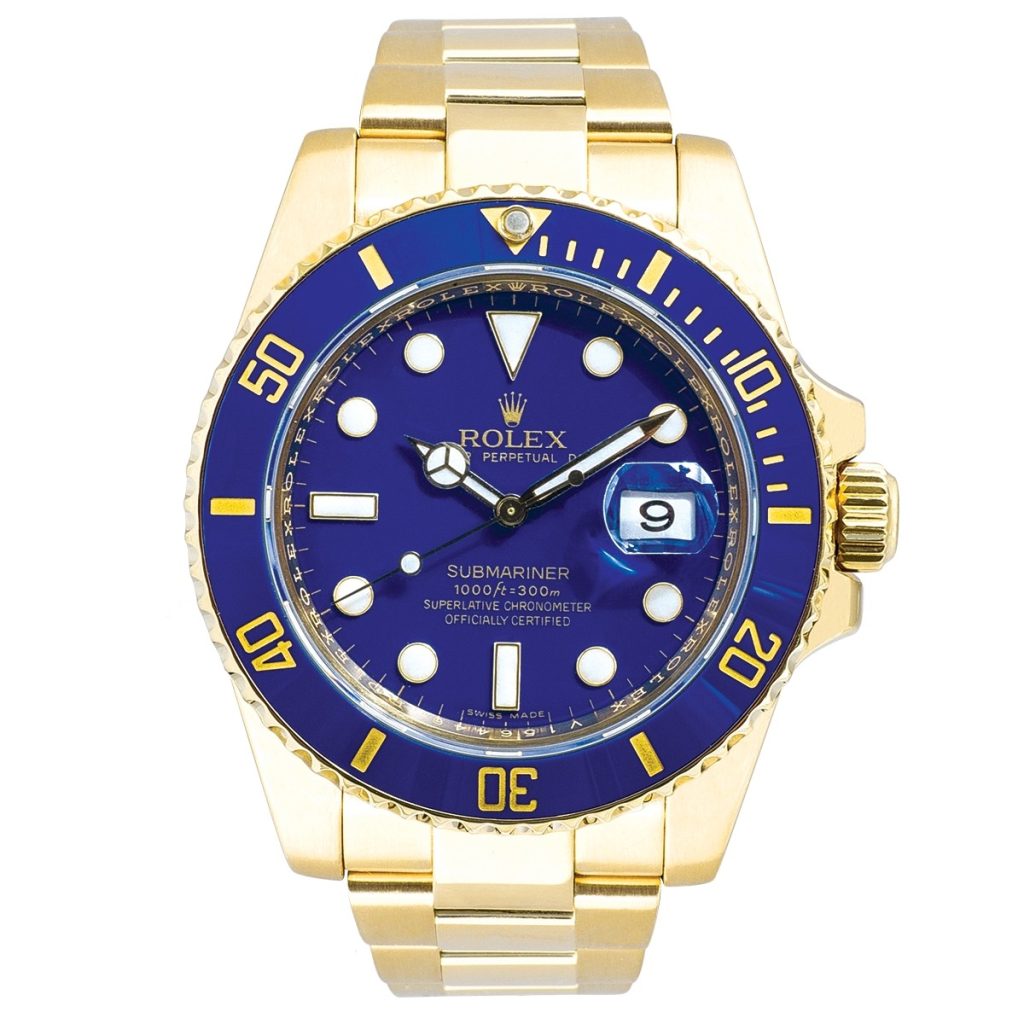
Considered the archetype of diver’s watches, the Rolex Submariner is truly iconic. If you’re looking for a Rolex that exudes adventure and precision, this is the watch for you. Originally launched in 1953, there are now numerous models of the Submariner, each one standing firmly in line with the original. The Submariner was the first waterproof watch to a depth of 100 meters (330 feet). Today, the 904L stainless steel Oyster case is water resistant to 300 meters (1000 feet). This pre-owned man’s Rolex Submariner in 18k yellow gold features a brilliant blue dial, sapphire crystal, and Oyster bracelet with a folding clasp. Timepiece functions include a unidirectional rotatable and graduated bezel, Triplockcrown and Chromalight display, allowing for accurate time-telling anywhere, night or day.
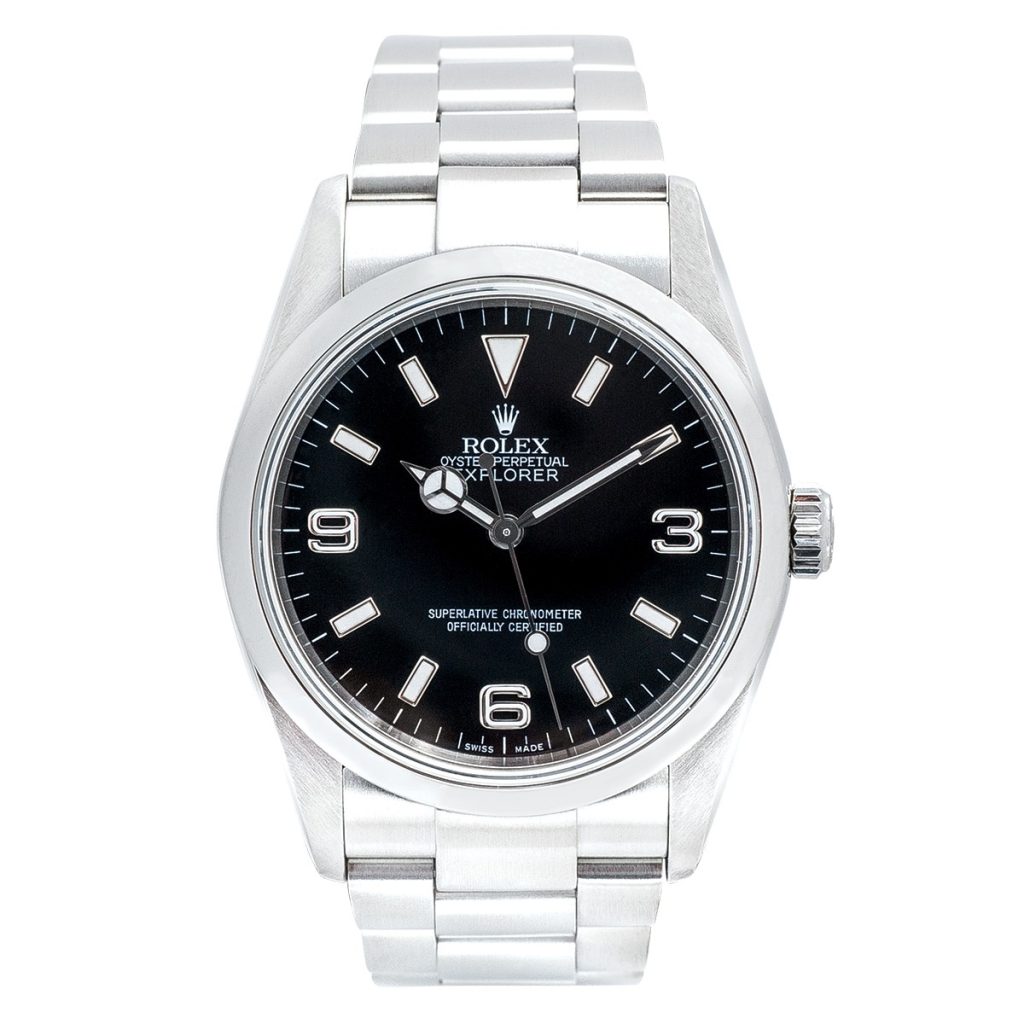
In 1953, Sir Edmund Hillary and Tenzing Norgay were the first to reach the summit of Mount Everest. Both explorers were equipped with Oyster Perpetual watches. Their tremendous feat sparked a new idea for Rolex. Inspired by this remarkable moment in human adventure, Rolex launched the Explorer. The watch immediately acquired iconic status and opened the brand to an entirely new market. The Explorer featured an all-steel bracelet and a new Twinlock winding crown with a double waterproofness system. This timepiece was the first in a series of watches specifically designed for professional users. The success of the Rolex Explorer proved that Rolex watches were dependable and accurate from the top of the highest mountains to the depths of the deepest oceans.
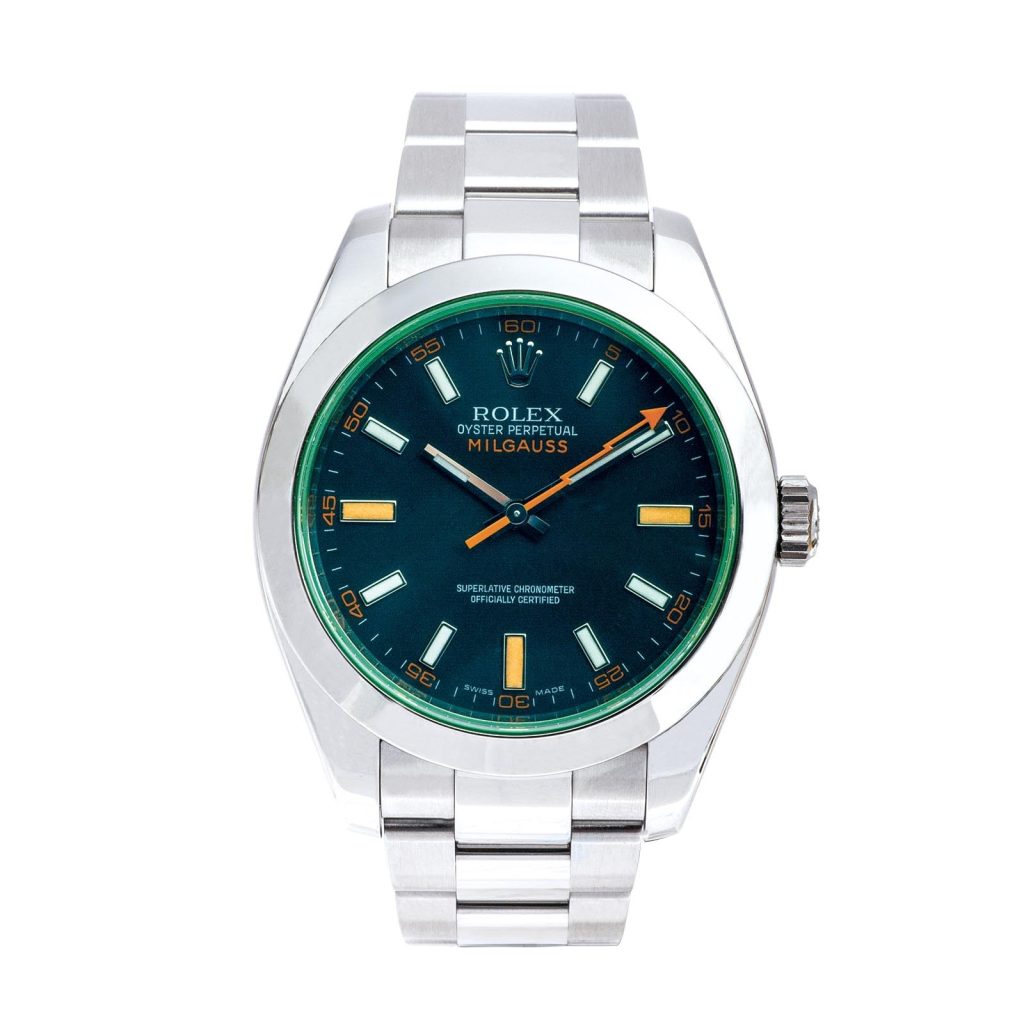
The year 1956 showed further proof that Rolex made watches for individuals from all walks of life. The Rolex Milgauss was the first watch of its kind. Designed specifically for the scientific community, the Milgauss is capable of withstanding magnetic fields of up to 1000 gauss (unit of magnetic field). The key difference between the Milgauss and other Rolex models is the shield protecting the movement. Before this invention, scientists, engineers, and other like professionals had a serious problem with the disruption of the timing of their watch due to magnetism. The shield protecting the movement resisted magnetic fields, which eliminated the issue and allowed for accurate timepieces. This was a huge technological advancement for Rolex and scientists around the world. The most recognizable feature of this durable timepiece is the lightning bolt second hand- a signature of the “scientist’s watch.”
Any true watch connoisseur knows the value of owning a Rolex. Once you strap a Rolex on your wrist you know you received your money’s worth. But there are a couple different ways to go about purchasing a Rolex. Do you want to pay top-dollar for a brand new Rolex? Or do you want to go for a reduced rate and purchase a pre-owned one?
The biggest benefit to purchasing a pre-owned Rolex is the price. When purchasing a pre-owned Rolex from a reputable dealer, like Leo Hamel’s in San Diego, the watch appears to be brand new. This is because the watch has been restored to its original splendor before going up on the market. Each and every part of the watch is inspected to ensure it is in superb working condition. Additionally, Rolex watches are not mass produced; they are assembled by hand utilizing high quality material. Even if you purchase a Rolex that is 20 years old, you know you will be getting technology, craftsmanship and precision that will stand the test of time. Essentially, it’s like buying a new watch at a discounted price. If you’re looking for a fantastic deal on a Rolex, purchasing pre-owned is the way to go.
Another benefit to purchasing a pre-owned Rolex is the wide variety of availability. Looking for a vintage Rolex from the 1940s? You’ll have a better chance finding one if you browse pre-owned watches. You’ll also be in possession of a watch that has an entire history of its own!
Some people may not want to purchase a watch that is “used.” To some, the biggest downfall to purchasing a pre-owned Rolex is the fact that you are not the original owner. To others, that’s not an issue. The biggest problem arises when you put yourself at risk of being scammed. There is a lot of fraud going on in the vintage Rolex world. The potential of being ripped off increases significantly when looking to purchase a pre-owned Rolex. Be wary of fakes. If a deal seems too good to be true, it usually is. It’s advisable to do your research on vintage Rolexes before handing over any money. Even better, bring the watch to the experts at Leo’s who can tell you in an instant whether or not the watch is genuine.
You might be thinking:
“Who wants to own a pre-owned luxury watch?” and that’s completely fair. Many people prefer to be the original owner and resist purchasing pre-owned. If this is how you feel, you should purchase a new Rolex. You’ll have the original box, all of the paperwork and the watch in your name. It is uniquely yours- no one else has ever worn it.
On the flip side, a major setback to purchasing a new Rolex is the price. Remember talking about the reduced rate of pre-owned Rolex a few moments ago? This is the exact opposite. The price difference between a new model and a vintage model will run upwards of thousands of dollars.
So, is it best to purchase a pre-owned or new Rolex? There really is no right or wrong answer to this question. When it comes down to it, it really just depends on your preferences and your budget.
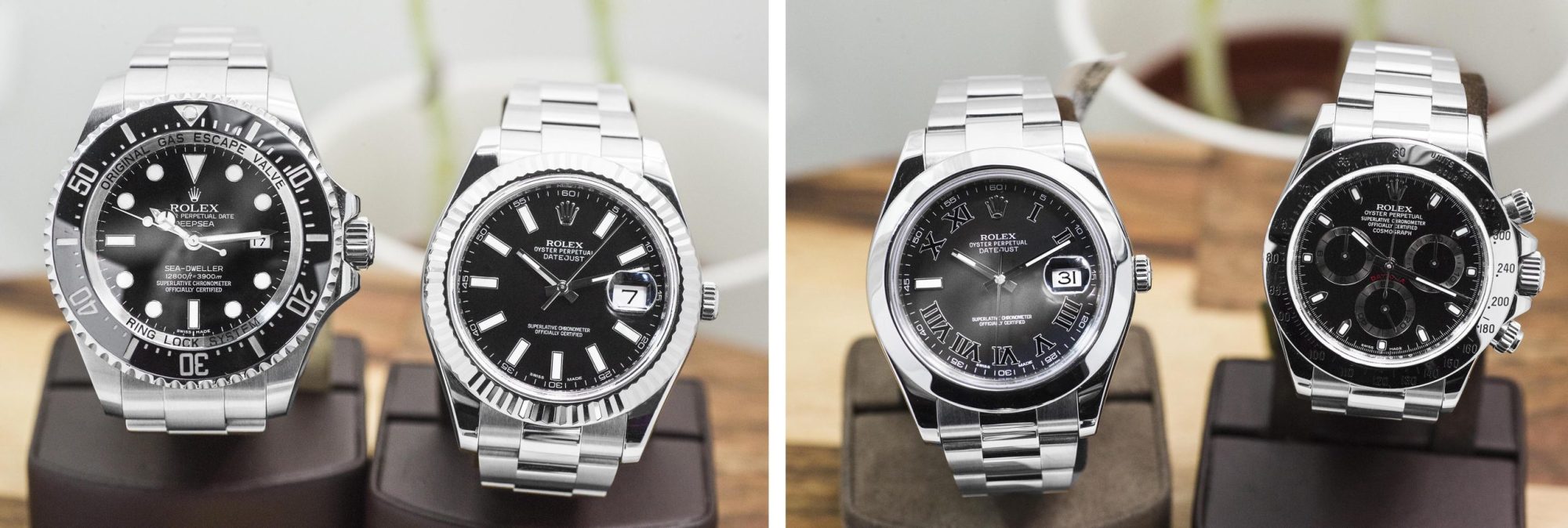
For the best selection of expertly reconditioned pre-owned Rolex watches in San Diego, visit Leo Hamel Fine Jewelers on San Diego Avenue. Whether you’re just browsing or you have your eye on a specific Rolex, we’re here to help! No matter which Rolex you choose, you’re guaranteed to be in possession of a classic, dependable wristwatch that is full of history and lore.